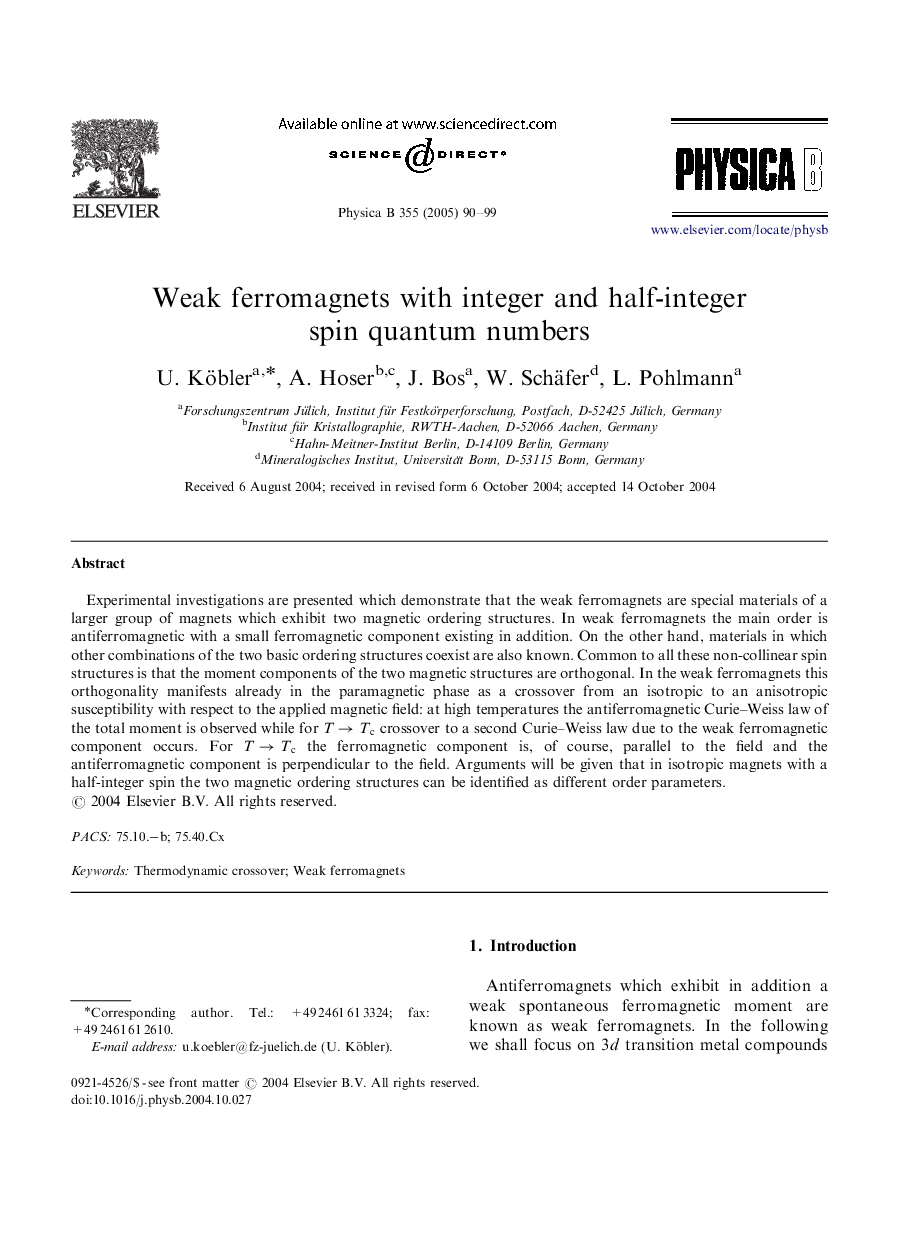| Article ID | Journal | Published Year | Pages | File Type |
|---|---|---|---|---|
| 9837970 | Physica B: Condensed Matter | 2005 | 10 Pages |
Abstract
Experimental investigations are presented which demonstrate that the weak ferromagnets are special materials of a larger group of magnets which exhibit two magnetic ordering structures. In weak ferromagnets the main order is antiferromagnetic with a small ferromagnetic component existing in addition. On the other hand, materials in which other combinations of the two basic ordering structures coexist are also known. Common to all these non-collinear spin structures is that the moment components of the two magnetic structures are orthogonal. In the weak ferromagnets this orthogonality manifests already in the paramagnetic phase as a crossover from an isotropic to an anisotropic susceptibility with respect to the applied magnetic field: at high temperatures the antiferromagnetic Curie-Weiss law of the total moment is observed while for TâTc crossover to a second Curie-Weiss law due to the weak ferromagnetic component occurs. For TâTc the ferromagnetic component is, of course, parallel to the field and the antiferromagnetic component is perpendicular to the field. Arguments will be given that in isotropic magnets with a half-integer spin the two magnetic ordering structures can be identified as different order parameters.
Related Topics
Physical Sciences and Engineering
Physics and Astronomy
Condensed Matter Physics
Authors
U. Köbler, A. Hoser, J. Bos, W. Schäfer, L. Pohlmann,
